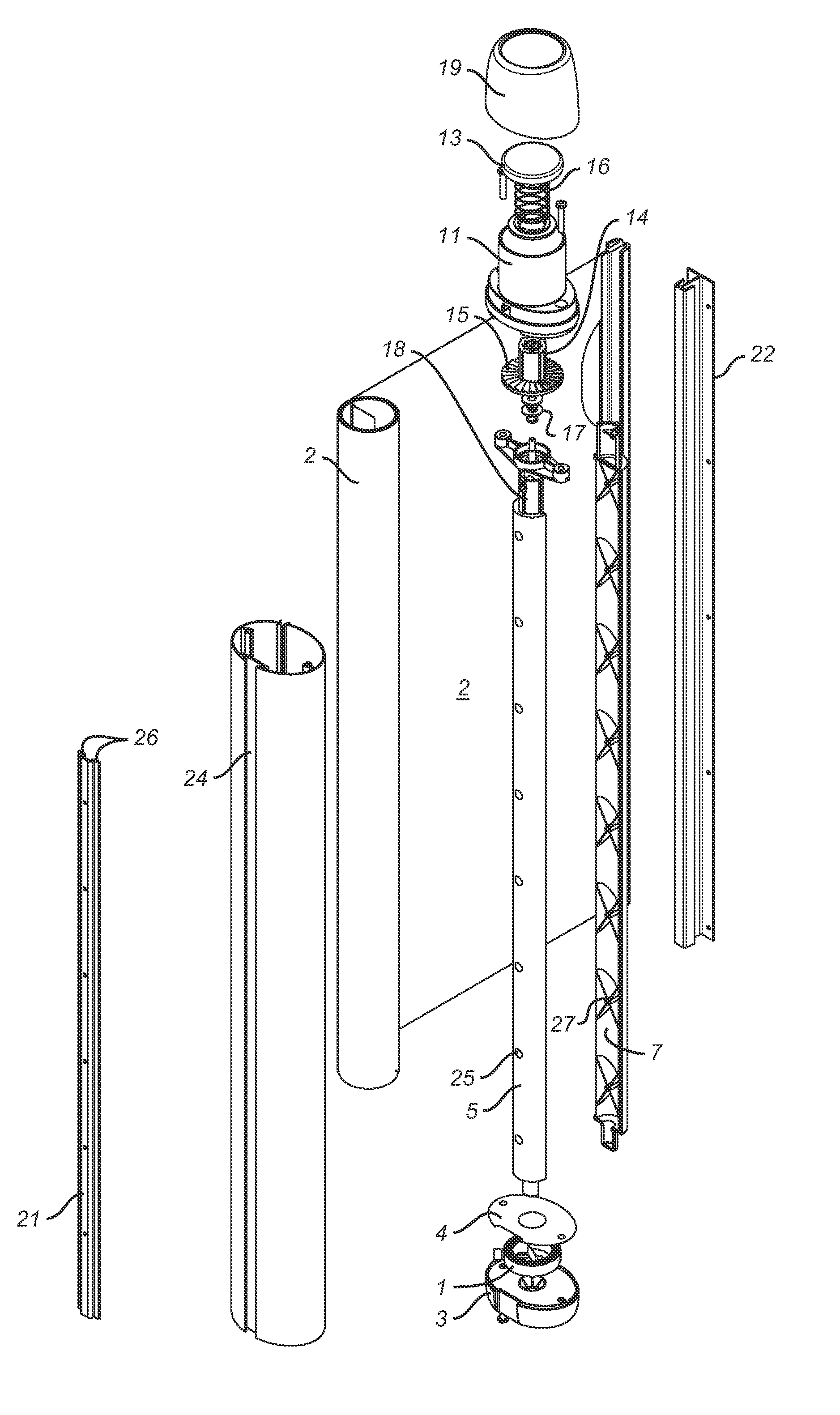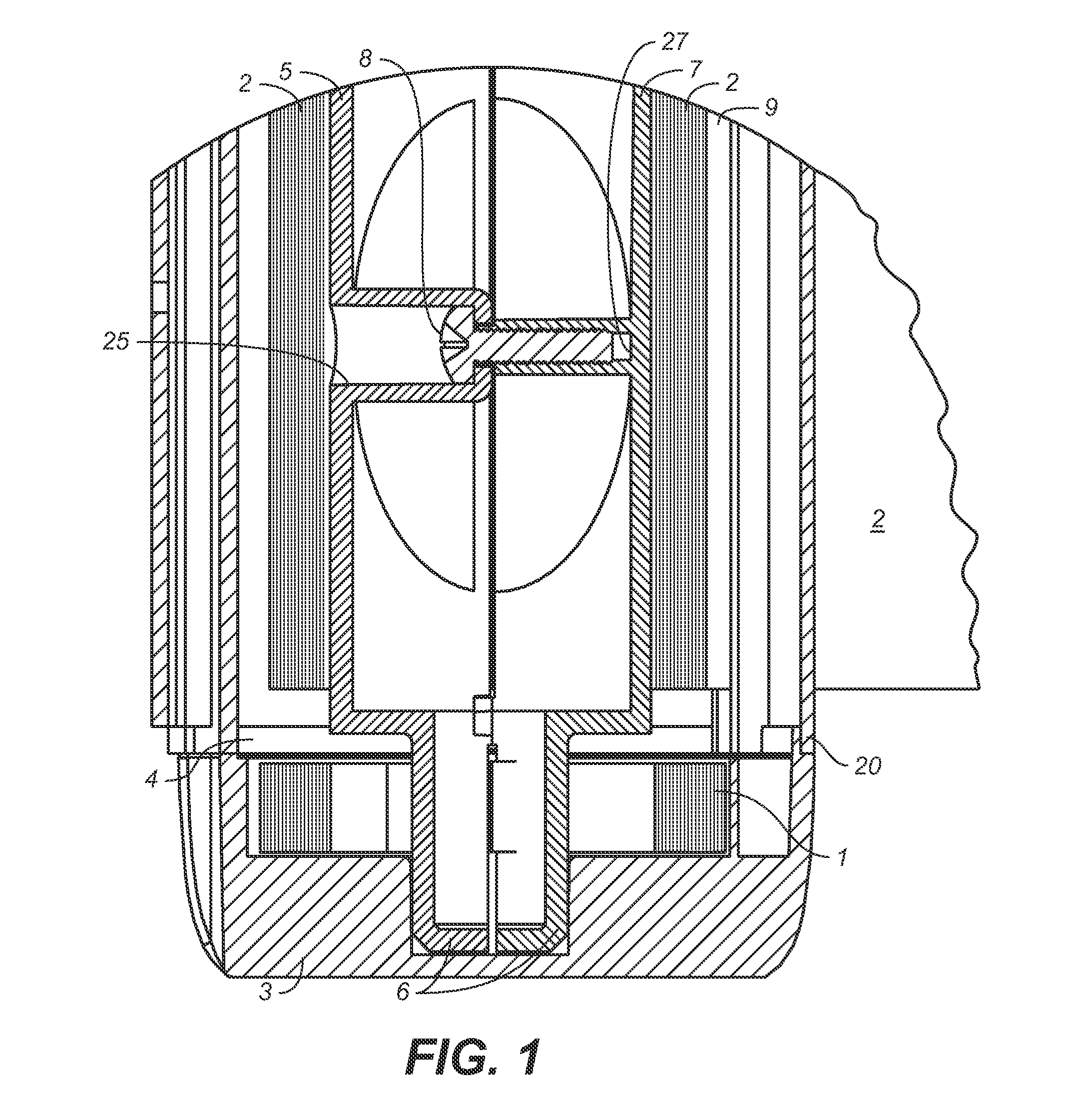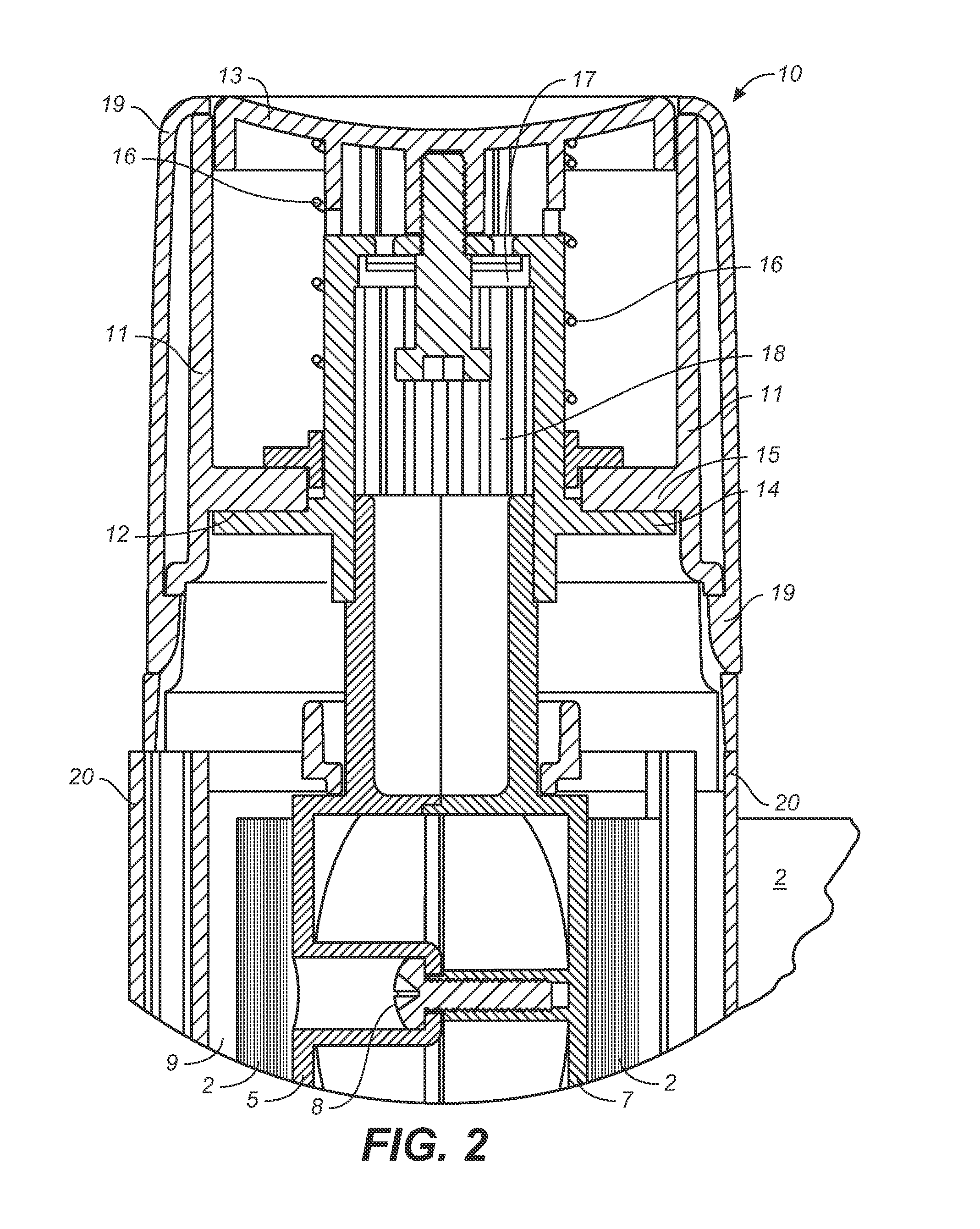Safety gate with a rewindable, rlexible barrier
a safety gate and lock mechanism technology, applied in the direction of safety guards, sliding grilles, ways, etc., can solve the problems of not allowing air to flow back, time it takes to translate back into their locked positions, adds to time delay, etc., and achieves the effect of slowing down their movemen
- Summary
- Abstract
- Description
- Claims
- Application Information
AI Technical Summary
Benefits of technology
Problems solved by technology
Method used
Image
Examples
first embodiment
[0019]FIGS. 2 and 3 illustrate the rest of the releasable lock mechanism 10 of the invention. At the uppermost, end of the spool is a top cap, 11, mounted on the spool in a sealed manner. The interior of the top cap, 11, is formed with interiorly disposed angular cap teeth 12 that extend downward vertically and the top of the top cap has an opening in which a lock release, 13, in the form of a depressible button, is disposed.
[0020]Within the top cap 11, a cylindrical spline lock, 14, is rotatably attached to the top of the spool. The spline lock 14 is formed with an angular toothed surface, 15, disposed and arranged to engage and disengage with the interiorly disposed angular cap teeth 12 to prevent rotation in one rotational direction and permit rotation in the opposite rotational direction. A spline geometry, 18, is disposed within or mounted on the uppermost portion of the spool and is positioned within the spline lock and is operatively connected with it to move the spline lock ...
second embodiment
[0023]FIGS. 6 and 7 illustrate the releasable lock mechanism. Inside cap 11, cylindrical spline lock, 14, is rotatably attached to the top of spool halves 5 and 7. The spline lock, 14, is mounted on a spline geometry, 18, which is disposed within the uppermost portion of the spool and is operatively connected to it to allow the movement of the spline lock axially in relation to the spool. (The spline geometry has male and female portions, male portion 18 is shown in FIG. 6 and is mounted on the spool ends. Female portion 18 is formed as four integral, spaced-apart, inner indentations of the spline lock as can be seen in FIG. 7.) The spline lock, 14, is formed with a toothed outer edge, 30, disposed and arranged around the circumference of the spline lock. Also inside the cap is a stationary spline lock bracket, 34, that is mounted on cap 11. The bracket is formed with circumferential bracket teeth, 35, on the central and inner surface of bracket 34. Teeth 35 are able to engage with ...
PUM
 Login to View More
Login to View More Abstract
Description
Claims
Application Information
 Login to View More
Login to View More - R&D
- Intellectual Property
- Life Sciences
- Materials
- Tech Scout
- Unparalleled Data Quality
- Higher Quality Content
- 60% Fewer Hallucinations
Browse by: Latest US Patents, China's latest patents, Technical Efficacy Thesaurus, Application Domain, Technology Topic, Popular Technical Reports.
© 2025 PatSnap. All rights reserved.Legal|Privacy policy|Modern Slavery Act Transparency Statement|Sitemap|About US| Contact US: help@patsnap.com



